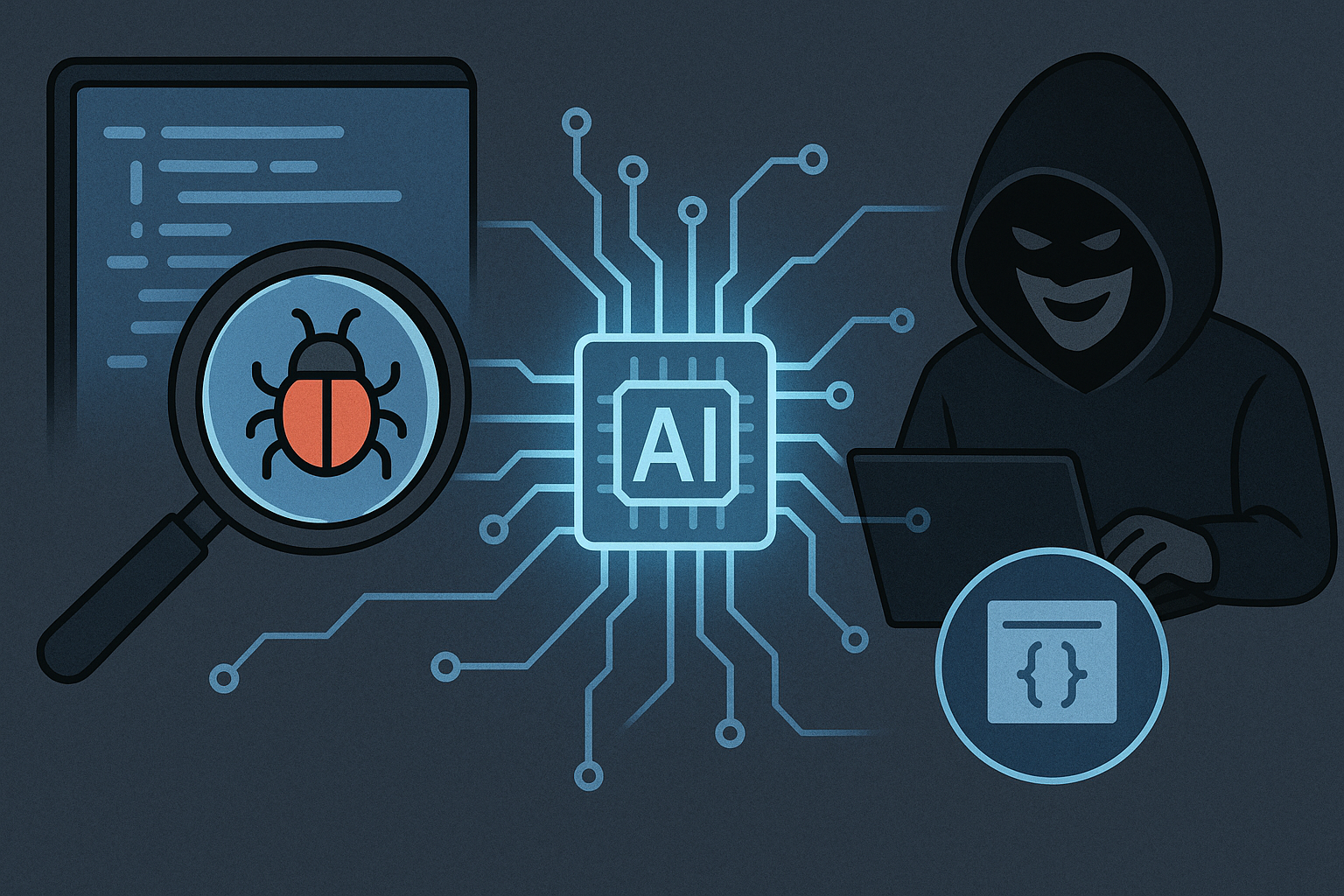Cybersecurity and the AI War | 매거진에 참여하세요
Cybersecurity and the AI War
#Security #White #Hacker #Attack #Detection #ZeroDay #AIUsage #Defend
Attackers vs. Defenders : The Dawn of a New Battlefield
Cybersecurity used to be a simple battle: hackers vs. firewalls. But in 2025, the game has completely changed.
Now, both attackers and defenders wield AI as their primary weapon.
Attackers use AI to craft highly targeted phishing emails and run automated vulnerability scanners.
Defenders deploy AI-driven detection systems capable of identifying even previously unknown malware.
This isn’t just a technology race anymore. it’s an AI-versus-AI war.
The Attackers’ Arsenal: AI-Powered Hacking
1. Intelligent Phishing (Phishing-as-a-Service)
Gone are the days of crude spam emails.
Today, phishing emails powered by GPT-class models are virtually indistinguishable from those written by humans.
Replicate company logos and writing style
Personalize messages based on the target’s social media activity
Support multiple languages for global reach
2. Automated Vulnerability Scanning
AI can study code repositories and identify security weaknesses with unprecedented speed.
Attackers are fine-tuning open-source LLMs to create “automated bug hunters.”
3. Advanced Threat Modeling
AI learns from network traffic and logs to predict how defense systems detect threats, allowing attackers to design evasive strategies.
The Defenders’ Shield: AI Security Tools
1. AI-Based Threat Detection
At Black Hat 2025, new AI threat detection solutions were unveiled.
Instead of relying solely on signature-based detection, these systems predict patterns of zero-day attacks.
Zero-Day Attacks Explained:
- Definition: Exploits targeting vulnerabilities unknown to developers or security vendors.
“Zero-day” refers to the fact that there is no time to respond before the attack occurs.
- Zero-Day Attack Patterns:
Traditional signature detection relies on databases of known malware (hashes, behavior patterns).
Zero-day attacks bypass this, as no prior record exists.
AI systems detect unusual behaviors common to new attacks, such as:
1) Sudden abnormal memory access
2) Unexpected network traffic spikes
3) Injection of abnormal code during normal program execution
In other words, AI identifies the telltale signs that even a “new” attack is likely to display.
2. Digital Twin Security
Companies replicate their networks in virtual “digital twin” environments.
AI simulates attacks in these environments to preemptively block threats before real damage occurs.
3. Multimodal Security Monitoring
Modern AI solutions analyze text, network logs, and even video to detect insider threats, such as employees leaking data.

Who Holds the Upper Hand?
Currently, attackers are often considered slightly ahead:
They face no regulatory or ethical restrictions.
Open-source AI models can be weaponized cheaply.
Detection systems are inherently reactive, always following the attack.
However, defenders are catching up.
Collaborative AI security networks allow one company’s observed attack patterns to be instantly shared worldwide, accelerating learning and response.
Real-World Cases
Late 2024: Multinational Bank Phishing
AI studied customer service interactions to mimic agents’ voices in thousands of phishing calls, resulting in hundreds of millions in losses.
Early 2025: North American Power Grid Hack Attempt
Attackers used LLMs to automatically analyze vulnerabilities in grid control systems. AI-based detection intervened in time, preventing damage.
Internal Data Leak
An employee attempted to upload internal data to an external cloud.
AI monitoring flagged abnormal access patterns and immediately blocked the transfer.
The battlefield is no longer hypothetical, it’s happening in real time.
Future Outlook
Over the next five years, cybersecurity is expected to evolve along several dimensions:
- Fully Automated AI Wars: Attacks and defenses clashing at sub-second speeds with minimal human intervention.
- National-Scale Security AI: The U.S., EU, and China are building country-wide AI security infrastructures.
- Ethics and Regulation: Legal accountability for AI-driven cyberattacks will become a major international debate.
- Cybersecurity Startup Boom: AI startups specializing in attack pattern prediction, zero-day detection, and insider threat management will flourish.
The AI arms race in cybersecurity is no longer a distant possibility, it’s already here.






